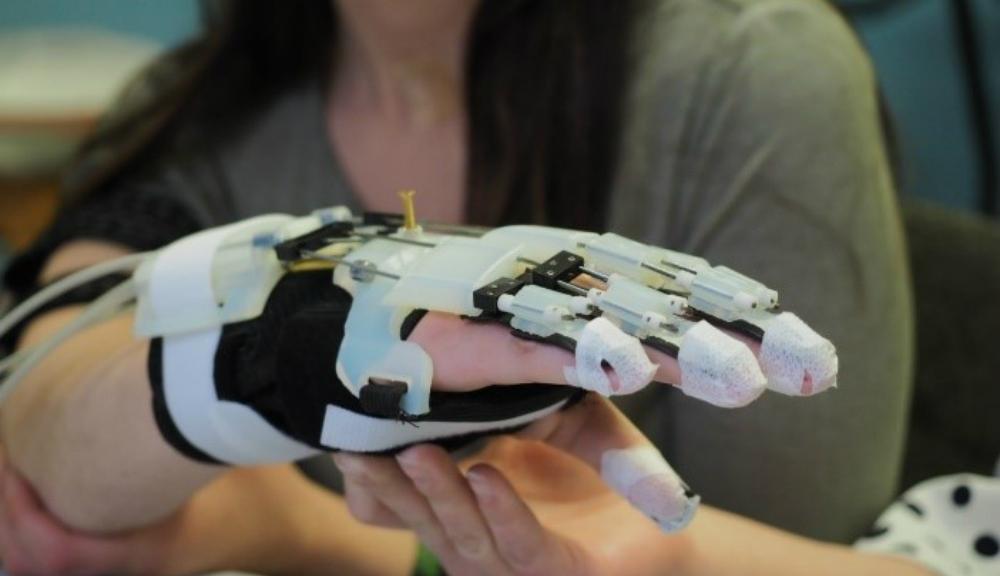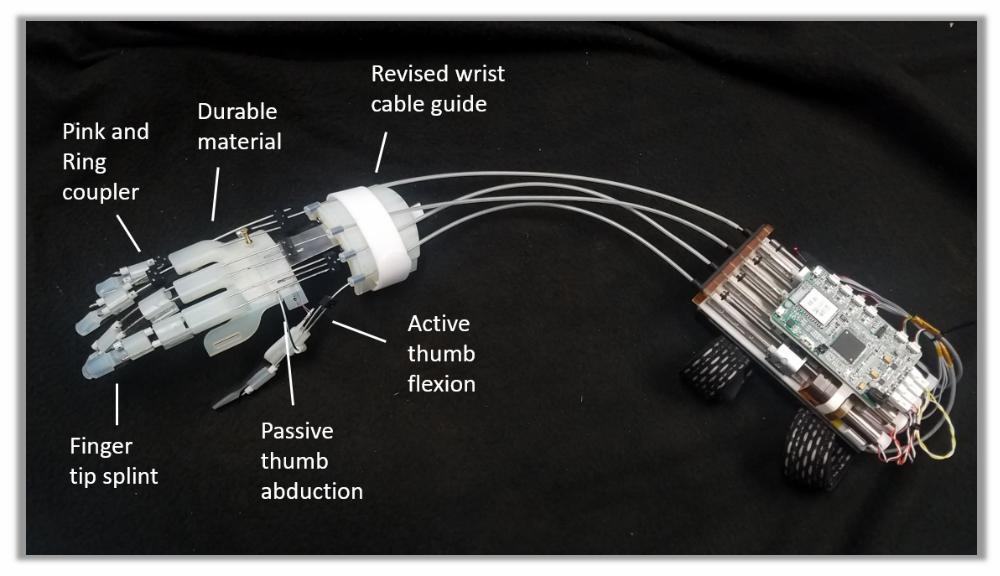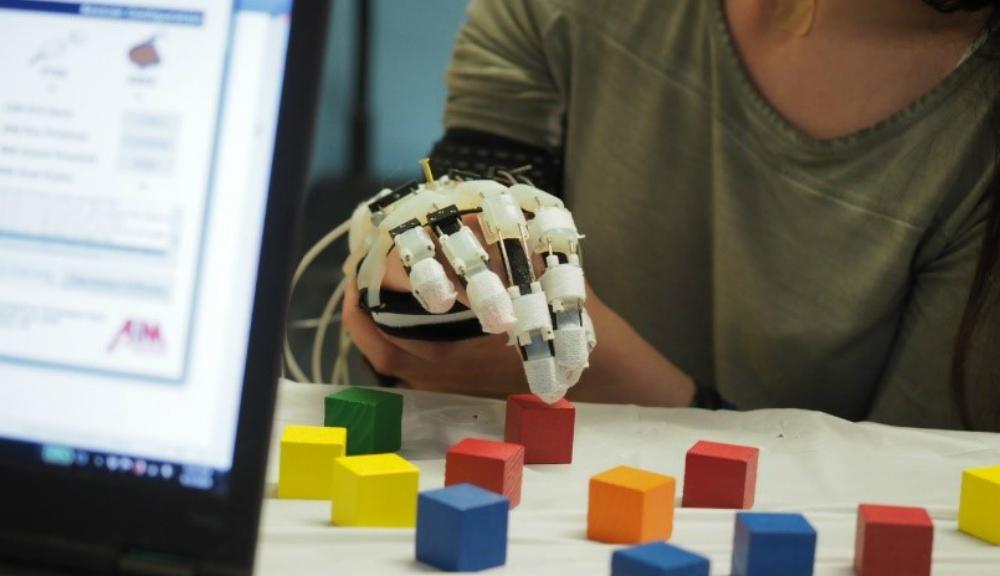An Active Hand Exoskeleton for Hemiparetic Individuals: The Hand Orthosis with Powered Extension (HOPE) Hand
Individuals who have chronic upper limb motor impairments can have an increased resting muscle tone that compromises their ability to extend the fingers under their own power. Chronic upper limb impairments can result from any of the following conditions: stroke, traumatic brain injury, cerebral palsy, multiple sclerosis, brachial plexus palsy, and spinal cord injury. Approximately 2-3 million people in the United States have upper limb motor impairments. Of these, 20 percent have hypertonicity and spasticity.
The HOPE Hand is a user-centric assistive hand exoskeleton that enables individuals with spasticity and hypertonicity to use their impaired hand again. This technology includes several design elements that vastly improve the performance, over other hand exoskeletons, for individuals with strong resistive finger flexion. The HOPE hand is attached to the dorsal surface of the hand using medical grade tape which comes in pre-cut shapes that make it easy to don and reliably stay on the hand throughout the day without migrating. The HOPE Hand uses parallel push-pull cables to move the fingers into flexion and extension positions, while providing stability and compliance to finger joints as they move through the range of motion. Because many of the components are made using stereolithography, the HOPE Hand is durable and can be custom fit to the individual using imaging modalities such as CT scan and infrared depth sensing.
The few products that are on the market for assisting upper limb motor deficiencies only work for individuals with mild to moderate cases of spasticity and hypertonicity, and in some cases, don’t include a dexterous hand component. Other products are targeted for the hand but are meant to passively keep the fingers in an extended position. The HOPE Hand performs active finger extension and flexion in all five fingers for individuals with mild to severe spasticity and hypertonicity, while keeping their joints stabilized and in a safe position.
Key Features/Benefits
Clinician and patient feedback drove the development of the HOPE Hand. The customization, compliance, and stabilization of the design allows the users to wear the device throughout the day without needing to adjust it. The active extension using the cable driven design allows users to live more independently and complete bimanual tasks.

The HOPE Hand on an individual with a traumatic brain injury (featuring the fingertip attachment strategy using medical tape)

Labeled image of the HOPE Hand with actuation unit (worn on the upper arm)

Individual with traumatic brain injury uses the HOPE Hand to pick up blocks in a functional occupational therapy test